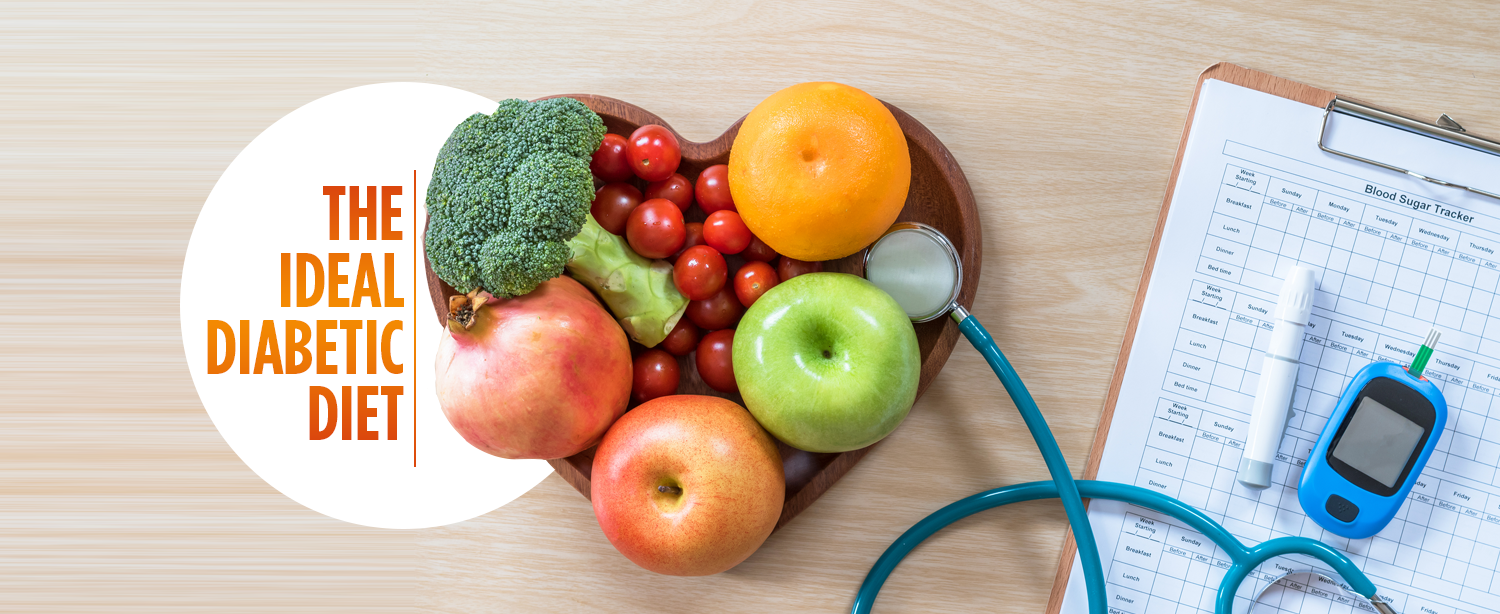Diabetes is a condition characterised by elevated blood sugar levels. It is currently one of the leading metabolic disorders around the world. As per the Lancet report, Type-2 Diabetes is expected to rise by more than a fifth, from 406 million in 2018 to 511 million in 2030 globally. About 98 million Indians are likely to be diagnosed with diabetes by the year 2030. Type 2 Diabetes could be managed and prevented by eating a healthy diet and leading healthy lifestyle.
Understanding how food affects your blood sugar:
Food has a direct effect on blood glucose. Some foods raise blood glucose more than others. An important part of managing diabetes is knowing what and how much to eat, and following an eating plan that fits your lifestyle while helping to control blood glucose. The 3 main nutrients found in foods are carbohydrates (carbs), proteins and fats.
Carbohydrates (carbs)
Carbs are the starches, sugar and fiber in foods such as grains, fruits, vegetables, milk products and sweets. They raise blood glucose faster and higher than other nutrients in foods: proteins and fats. Knowing what foods contain carbs and the amount of carbs in a meal is helpful for blood glucose control. Choosing carbs from healthy sources like vegetables, fruits and whole grains (high fiber) are preferred over carbs from sources with added sugars, fat and salt.
Proteins
Proteins are a necessary part of a balanced diet and can keep you from feeling hungry. They do not directly raise your glucose like carbs. However, to prevent weight gain, use portion control with proteins. In people with Type 2 diabetes, protein makes insulin work faster, so it may not be a good idea to treat low blood sugar with protein shakes or mixes.
Fats
Fats are necessary part of a balanced diet, especially healthy fats from fatty fish, nuts and seeds. They do not raise blood glucose but are high in calories and can cause weight gain.
Aim to include all 3 nutrients to balance your meals.
Planning a Diabetes Diet
A diabetic diet doesn’t have to be complicated and you don’t have to give up all your favourite foods. Here are a few health tips for planning an ideal Diabetic diet:
1. Eat more
- Healthy fats from nuts, olive oil, fish oils, flax seeds, or avocados.
- Fruits and vegetables—ideally fresh, the more colourful the better; whole fruit rather than juices.
- Whole grains and millets.
- High-fiber cereals and breads made from whole grains.
- High-quality protein such as eggs, beans, low-fat dairy, and unsweetened yogurt.
2. Eat less
- Trans fats from partially hydrogenated or deep-fried foods.
- Packaged and fast foods, especially those high in sugar, baked goods, sweets, chips, desserts.
- Foods made from refined flour – bread =, noodles or pastas.
- Processed meat and red meat.
- Low-fat products that have replaced fat with added sugar, such as fat-free yogurt.
3. Be smart about sweets
Eating a diabetic diet doesn’t mean eliminating sugar altogether, but like most of us, chances are you consume more sugar than is healthy. If you have diabetes, you can still enjoy a small serving of your favourite dessert now and then. The key is moderation.
Tricks for cutting down on sugar:
- Reduce soft drinks, soda and juice.
- Don’t replace saturated fat with sugar.
- Sweeten foods yourself.
- Check labels and look for products with hidden sugar.
- Avoid processed or packaged foods.
- Reduce the amount of sugar in recipes by ¼ to ⅓.
- Find healthy ways to satisfy your sweet tooth.
3. Be careful with Alcohol
Do not underestimate the calories and carbs in alcoholics drinks including beer and wine. Cocktails mixed with soda and juice can be loaded with sugar. Liquid calories can also spike up your blood sugar levels.
4. Choose fats wisely
Some fats are unhealthy and others have enormous health benefits, so it’s important to choose fats wisely.
- Unhealthy fats. The most damaging fats are artificial trans fats, which make vegetable oils less likely to spoil. Avoid commercially-baked goods, packaged snack foods, fried food, and anything with “partially hydrogenated” oil in the ingredients, even if it claims to be trans fat-free.
- Healthy fats. The healthiest fats are unsaturated fats, which come from fish and plant sources such as olive oil, nuts, and avocados. Omega-3 fatty acids fight inflammation and support brain and heart health. Good sources include salmon, tuna, and flaxseeds.
- Saturated fats. Found mainly in tropical oils, red meat, and dairy, there’s no need to completely eliminate saturated fat from your diet—but rather, enjoy in moderation.
5. Eat regularly and keep a food diary
It’s encouraging to know that you only have to lose 7% of your body weight to cut your risk of diabetes in half. And you don’t have to obsessively count calories or starve yourself to do it. Two of the most helpful strategies involve following a regular eating schedule and recording what you eat.
Are you suffering from Diabetes? Consult our team of Nutritionists who can guide you with personalised diet plans to control your Diabetes and lead a normal life. Please find below link for more details:
https://www.kokilabenhospital.com/departments/clinicaldepartments/nutritiontherapy.html


